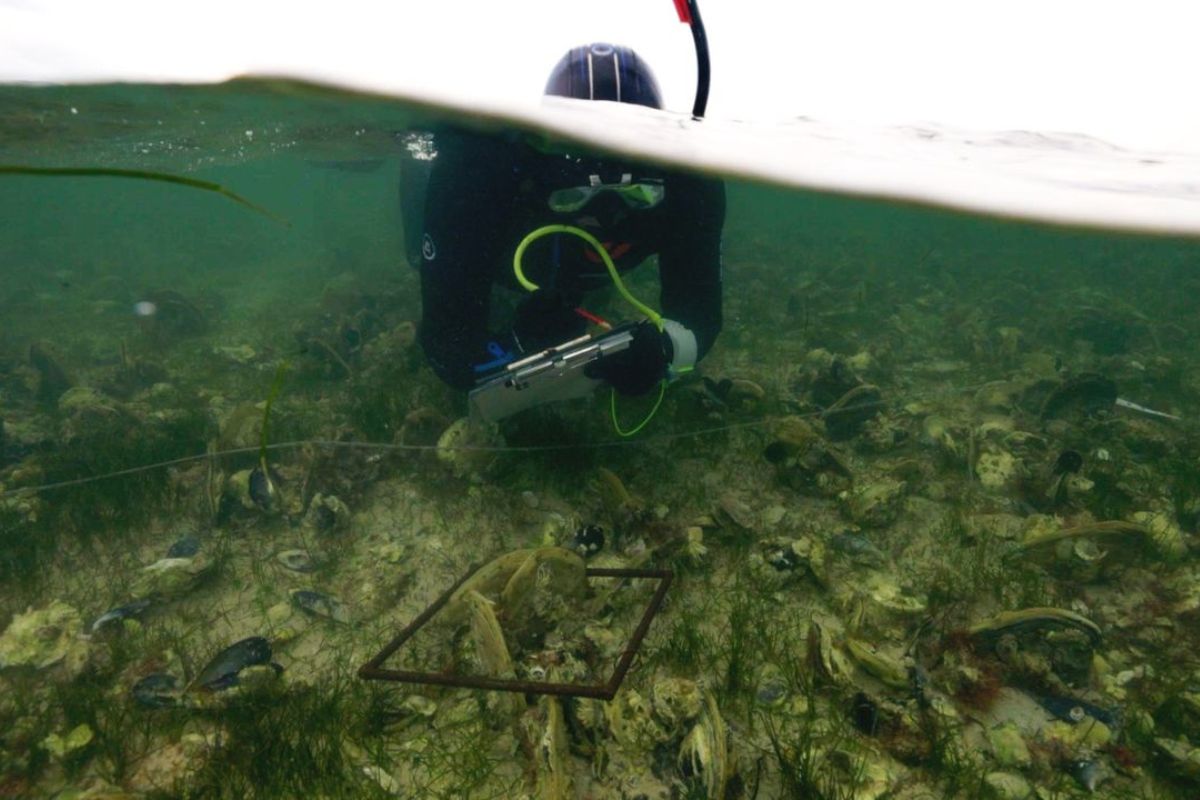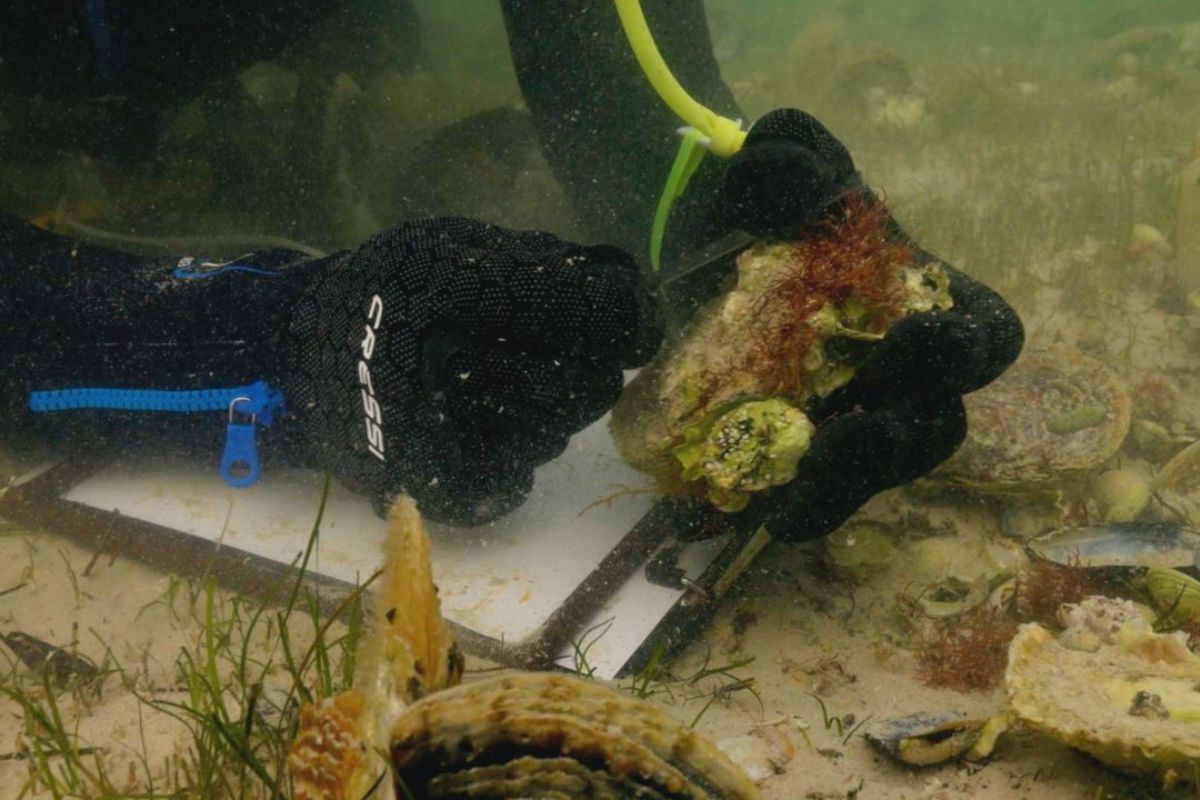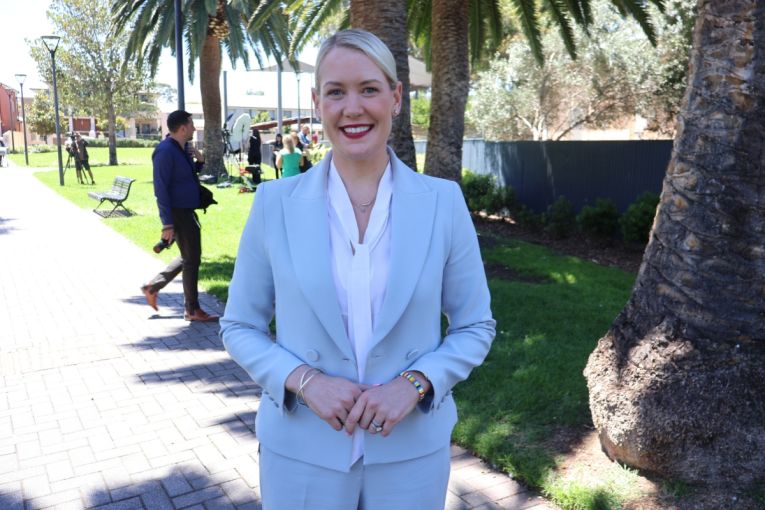Vital SA oyster reef restoration wins national accolade amid algal bloom
As vital environmental work in Coffin Bay wins a top national award its founder says the state’s harmful algal bloom has “completely changed the context” of oyster reef restoration.

A timely Reviving Coffin Bay’s Lost Oyster Reefs project has won a Bronze Tier award as part of Australian Geographic Society’s Awards for Nature winning a $20,000 grant to upscale its marine conservation efforts.
The Eyre Peninsula project involved the building of biodegradable mesh oyster shell bags which are filled with donated shells from local oyster producer Coffin Bay Oyster Farm.
Once constructed, the shell bags are planted on the seafloor to provide a substrate for baby oysters to settle on and grow the reef.
University of Adelaide marine ecologist Dr Dominic McAfee started the Coffin Bay community-based oyster reef project in 2023 to engage with the local government, schools and citizens about the historic loss of oyster reefs.

McAfee said the algal bloom impacting the state had “completely changed the context” of the oyster reef restoration projects.
You might like
“I’ve been doing oyster reef restoration for about eight years in the state, primarily talking about the biodiversity and fish productivity benefits,” he said.
“But now because of the algal bloom we’re also really focused on restoring the filter-feeding benefits that oyster reefs provide.”
Native oyster reefs once populated more than 1,500 km of South Australia’s coast, with Coffin Bay home to some of state’s largest reefs before it was destroyed by dredge fishing in the 19th century.
“We did a pretty large oyster restoration experiment to learn whether it was realistic to restore reefs in the area — it was a great success with tens of thousands of oysters recruited which is needed to restore an ecosystem,” McAfee said.
The $20,000 grant for the joint University of Adelaide and conservation group Eyre Lab project would be spent on the development of a shell recycling centre to generate more oyster shell bags and upscale restoration in light of the algal bloom.
The award followed the state and federal governments announcement it would invest $20.6 million into marine restoration projects across both metropolitan and regional SA as part of the algal bloom summer plan.
Stay informed, daily
The funding would go to large-scale native oyster reefs, community shellfish reefs, seagrass and blue carbon restoration projects and breeding of threatened and vulnerable marine species.
“Oysters feed on algae, nutrients and other things in the water where they can remove and cycle it back to the sea floor,” McAfee said.
“With the loss of reefs, we’ve also lost that filtration function which could make a meaningful difference in coastal water quality and the threat of algal blooms.”

McAfee said the algal bloom summer plan was more about “future proofing” than an immediate solution
“The investment in oyster reef restoration for the summer plan is really about looking ahead to repair those filtration functions and biodiversity that oyster reefs provide which can reduce the risk of future algal blooms,” he said.
“There’s no amount of restoration this summer that can combat this ongoing algal bloom — it is too large to be addressed with any quick fixes.”
McAfee said previous restoration projects in SA had shown evidence of large-scale water filtration including a Glenelg reef created by University of Adelaide researches, the state government and The Nature Conservancy.
“The large-scale oyster reef off the coast of Glenelg (completed in 2021) was filtering six million litres of water a day per hectare a year and a half after that was constructed.”
“If we’re able to restore reefs at much larger scales then you could start to quantify those water quality benefits.”
The Reviving Coffin Bay’s Lost Oyster Reefs project aims to be completed by the end of August 2026 with plans to continue on a larger scale in the future.
The Australian Geographic Society Awards for Nature winners will be announced tonight at a public ceremony hosted by the Australian Museum in Sydney.








